![]()
![]()
![]()
Use LEFT and RIGHT arrow keys to navigate between flashcards;
Use UP and DOWN arrow keys to flip the card;
H to show hint;
A reads text to speech;
95 Cards in this Set
- Front
- Back
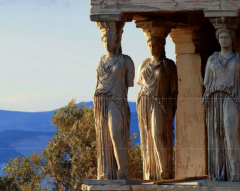
|
caryatids/cariatids -acropolis, Athens |
|
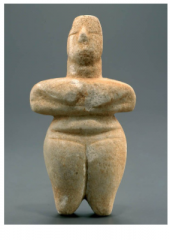
|
Neolithic (final period of the stone age) 6800-3200 BC stone |
|
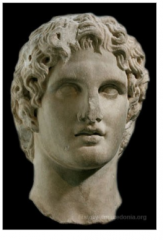
|
Hellenistic 323-31 BC "greek-izing" last period before Roman takeover |
|
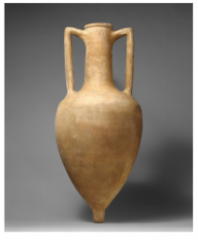
|
Amphora -for olive oil -bulbous shape -specifically for transport -made of terracotta -Hellenistic (323-31 BC) |
|
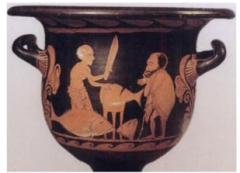
|
Crater -mixing bowl -mix water and wine (wine was never drunk neat) |
|
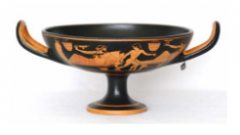
|
Kylix -drinking cup |
|
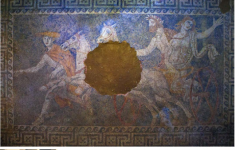
|
Mosiac -Royal Burial at Amphipolis -Hades carrying Persephone down on a chariot -in multi-chambered tomb -companion of Alexander the Great ~400 BC |
|
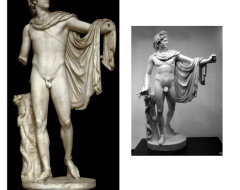
|
The Belvedere Apollo -most sublime of all ancient statues -in the Vatican courtyard -Hellenistic (350-325 BC) -just shot arrow? |
|
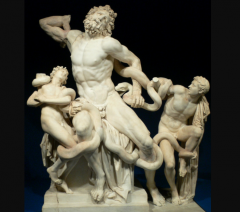
|
Laocoon -somewhere between 400-100 BC (faces before 400BC were expressionless and can't date this) -made of two pieces of marble -reflects famous scene of the Aeneid -Poseidon sent 2 sea serpents to kill Aeneid and his two sons |
|
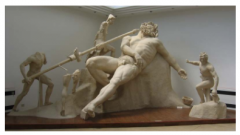
|
Sperlonga (pt. 1) - the blinding of Polyphemus(the cyclops) by Odysseus and his men -in a cave on the coast of Italy |
|

|
Sperlonga (pt. 2) -Scylla (monster) being attacked by Odysseus' ship -in cave on coast of Italy |
|
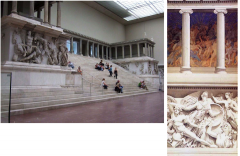
|
Great Alter of Zeus -Pergamon (in Turkey) -Carl Humann -brought all of it to Berlin |
|
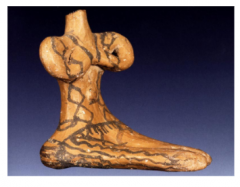
|
Franchthi Cave -female figurine - fertility goddess -fired in the open (no kiln) -middle neolithic (5800-5300) |
|
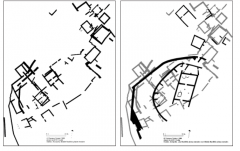
|
Middle to Late Neolithic Settlement -Sesklo - 5800-5300 to 5300-4500 BC -closely grouped houses around central megaron -settlement wall- not really defensive -wooden/thatch roof |
|
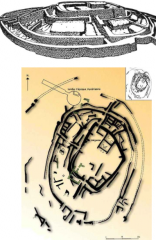
|
Dimini -Middle Neolithic Settlement -multiple defensive walls for retaining animals (low) -destroyed by fire -destruction event or accident -Megaron building near middle -House N |
|

|
House N (of Dimini) -middle neolithic -beaten earth door -cooking installations -storage areas discovery of a kiln (earliest instance of one) |
|
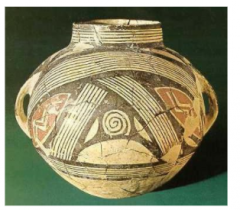
|
Dimini Pottery found at House N -stone or terracotta?? -middle neolithic -first use of kiln -manufacturing of pottery |
|
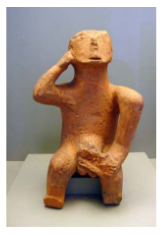
|
Figurine from Thessaly -stone or terracotta -ritual purpose -middle neolithic (5800-5300) |
|
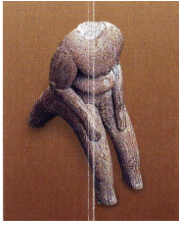
|
Sesklo Figurine -stone or terracotta -Middle neolithic (5800-5300) -ritual purposes |
|
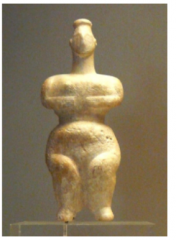
|
Sparta Figurine -Middle Neolithic (5800-5300) -ritual purposes |
|
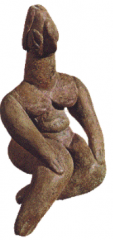
|
Nea Nikomedeia Figurine -middle neolithic (5800-5300) -ritual purposes |
|
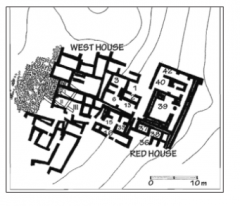
|
Vasilike "House on the Hilltop" -Crete -Early Minoan 2 (EMII) 2500-2200 (early bronze tech.) -stone built and timber framed walls coated w plaster |
|
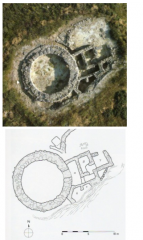
|
Early Minoan Tholos Tombs -south Crete 3000-1700 BC -circular tomb with labyrinth like entrance -"dromos" = "passage" aka entrance to the tomb |
|
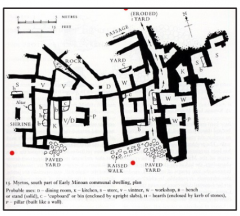
|
Myrtos -village on the S. coast of Crete -all houses are touching -evidence of production (pottery, ceramics, textiles) walls go: stone (bottom), mud (wall), thatch(roof) -zones and cell like EMII (early minoan 2; 2500-2200) |
|
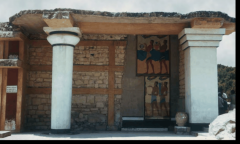
|
Zimri-Lim at Mari -Euphrates ~1800 BC mud plaster fresco- "false fresco" painted on dry plaster -religious scenes and important people in the palace -Late Bronze Age (1550-1100BC) |
|
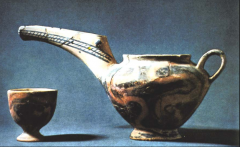
|
Vasilike Ware Cup and Beak Spouted Jug -EMII ( 2500-2200 BC) -dark paint on a light background -pottery made to imitate stone -mottled affect -zoomorphic elements (bird) |
|

|
Bull Leaping Fresco -LMI (1550-1450) -central court at Knossos |
|
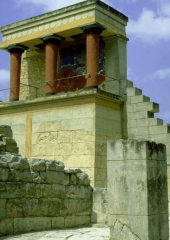
|
N Entrance of Palace of Knossos -LMI (1550-1450) -relief fresco of bull in upper gallery -use of sun & shadows |
|

|
Processional Fresco @ South Propylon -Knossos -LMI (1550-1450) -bringing gifts to an important person -hands up in a religious stance |
|
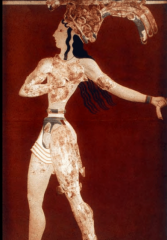
|
Reconstruction of Priest-King Fresco -Knossos -LMI (1550-1450) -maybe the hat belonged to a Griffin -Evan trying to show a person of importance |
|
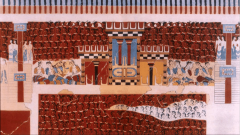
|
Grandstand Fresco -Knossos -LMI (1550-1450) -large scale gathering of men -a handful of women (topless) red=male white = female coloration from the Egyptians -Horns of Consecration symbolizing ritual |
|
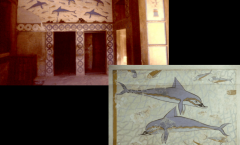
|
The Queen's Megaron and Dolphin Fresco -Dolphin Fresco --> LMIB (1500-1450) -attention to detail |
|
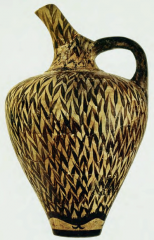
|
Floral Style Jug LMIA (1550-1500) -Phaistos -grass -used for pouring |
|
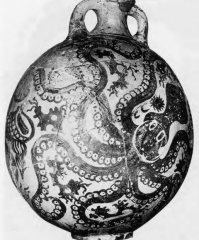
|
Marine Style Pilgrim Flask LMIB (1500-1450) -octopus - |
|
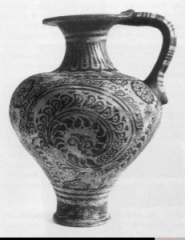
|
Floral Style Jug LMIA (1550-1500) -Palaikastro (N Coast of Crete) |
|

|
Rhyton -Zakro (hilltop sanctuary) -LMI (1550-1450) -serpentine -ceremonial, for libations or drinking/pouring a drinking horn of sorts |
|
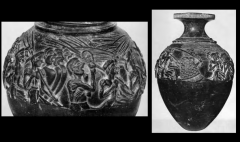
|
Harvester Vase -Aghia Triadha LMI (1550-1450) -steatite |
|

|
Boxer Rhyton -Aghia Triadha LMI (1550-1450) -steatite |
|
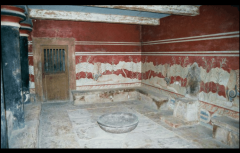
|
Throne Room at Knossos -griffins on the wall = symbol for war? -might have been a shrine |
|
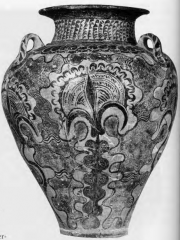
|
Palace style Jar -Knossos -stylized with papyrus plants LMIA (1550-1500) |
|
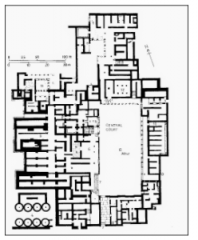
|
Malia -Minoan palace 1900-1700 (MMII) |
|
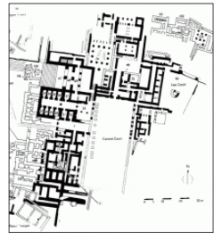
|
Phaistos -minoan palace 1900-1700 (MMII) -grows out from central court -built on several terraces - |
|

|
Knossos Layout -largest of the minoan palaces -flat roofs -light wells/shafts -multiple stories |
|
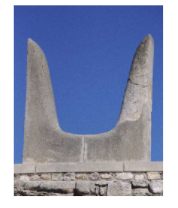
|
horns of consecration |
|
|
columns vs pillars |
columns- circular/cylinder pillars (pillastar)- square/rectangular *downward tapering columns specific to Minoan architecture |
|
|
pise |
building technique used in LMI period (@knossos) using rammed earth or clay to make walls and floors |
|
|
ashlar |
rectangular block of stone |
|
|
pier and door construction |
same thing as a pillar- square/rectangular |
|
|
post and lintel construction |
two posts with a "lintel" piece perpendicular on top |
|
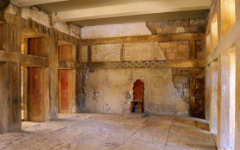
|
Hall of the Double Axe's -reception space -knossos -LMI |
|
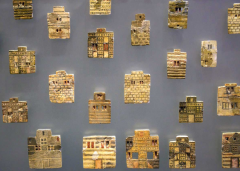
|
Faience plaques -Knosses MMII (2000-1770) |
|
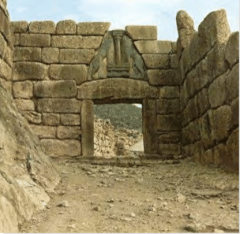
|
Lion's Gate -Mycenae -ashlar masonry -massive post and lintel -relieving triangle -tapering columns -either lions or griffins -incurved atlas -late helladic period |
|
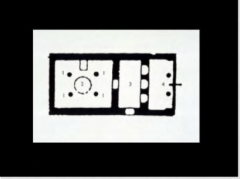
|
Mycenaean Megaron -three room structure -porch (with columns) -anteroom -main room (4 columns, central hearth, throne) -on a cliff -late helladic period |
|

|
Tiryns -citadel -competing with mycenae -massive fortification walls -upper citadel (palace and megaron) -lower citadel (shrines and workplaces) -Palace & megaron in the middle -narrow entrance ramp and exit stairwell -late helladic period |
|
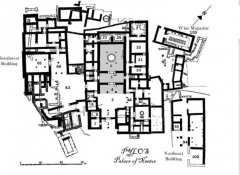
|
Palace of Nestor at Pylos -no fortification walls (no competition - no one close by) -entrance bee lines to megaron -linear B tablets found -late helladic period |
|
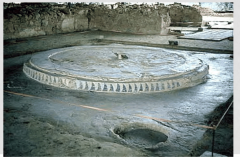
|
Hearth in Megaron at Pylos (Nestor) -best preserved -Late Helladic Period |
|
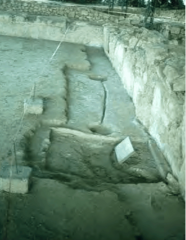
|
Throne and Libation Chamber -only megaron with one -pylos at nestor -king sits at throne and can offer libations -late helladic |
|

|
Lion and Griffin fresco -late helladic -pylos at nestor -lion and griffin are synonymous to the power and presence of the bull in minoan imagery |
|

|
Reconstruction of Megaron at Nestory (pylos) -late helladic |
|

|
Chamber Tomb -dromos= pathway, dug out -doorway -burial chamber cut into bedrock -fill dromos back in post burial -late helladic -pylos -less labor intensive -multiple burials |
|
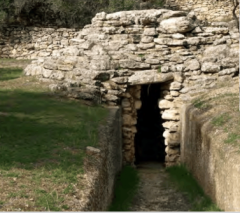
|
Tholos Tombs -pylos (originated here) late helladic -round -beehive shape in chamber -dromos lined with stone -built up (not dug in) -more labor intensive -multiple burials |
|
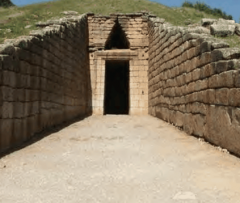
|
The Treasury of Atreus at Mycenae -dromos of ashlar masonry -doorway w post and lintel & relieving triangle -largest at mycenae -acoustics are weird -greek mythology background - illiad |
|
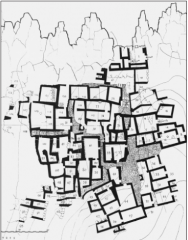
|
Karphal -crete -dark ages (1100-900) -orthogonal = rectangular (90 degree angles) -on a hill- best defense -NO MEGARON -tholos tombs present |
|
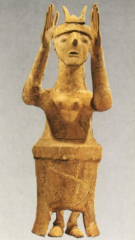
|
Female Figurine -Karphal (crete) -dark age (1100-900) -goddess or worshiper? -Oron's pose = praying pose [hands raised] -ritual wear: hoop skirt, horns of consecration |
|
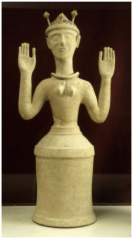
|
Female Figurine -Gazi -1400 BC -contrast with Karphal figurine - no feet shown -same hand placement |
|
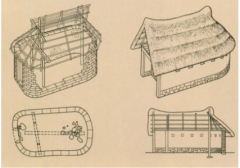
|
Old Smyrna -modern day Turkey -1000 BC -greek influence -walls of mud brick, foundation cut of stone, thatched roof -curved foundation- similar to ashlar masonry -bi-aps = 2 curved ends |
|
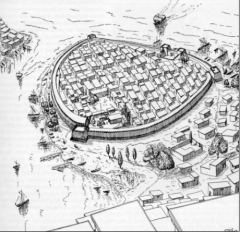
|
Old Smyrna -expanded in 900BC -added fortification (port city) -hearths inside of buildings (outlets for smoke, chimneys) -emphasis on orthogonality (rectangular) |
|
|
Lefkandi |
-Euboea (Greece) -little disruption at end of bronze age -pottery seriation (ex. coke bottles) -known for toumba |
|

|
Toumba Building -Lefkandi (euboea) -dark ages (ca 950) -Apsidal building (one end curved) - people lived there (room for storage jars) -thatched roof -exterior corridors with post holes for wooden beams = "peristasis" -3 rooms (2 smaller) -center room has magnificent burial -ritually destroyed |
|
|
peristasis |
wooden poles outside of temple |
|
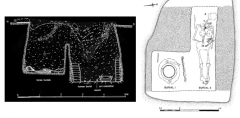
|
Toumba Double Tomb: Double Human Burial -male: cremated&put in bronze amphora with weapons (amphora imported) -female: inhumed with gold bra and jewelry Horse Burial -4 horses -sacrifice |
|
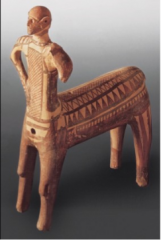
|
Minotaur figurine -Lefkandi -dark age -solid human part, hollow horse part -found in tombs |
|
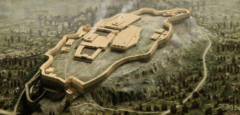
|
Late Mycenaean/ Dark Age Athens -continuity -came to Athens to escape destruction Acropolis - palace culture -fortification wall Agora -city square -burials Kerameikos District = burials Dipylon Gate = 2 Doors / 2 Towers -used potters wheel |
|
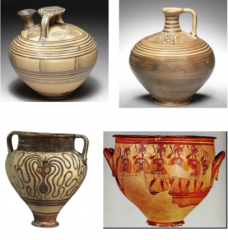
|
Late Mycenaean Pottery LMIII (1400-1100) figural |
|
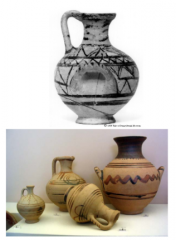
|
Submycenaean Pottery 1100-1050 BC -no more figural -just geometric -Stirrup Jar Introduction (handle looks like stirrup and mouth sticks straight up) |
|
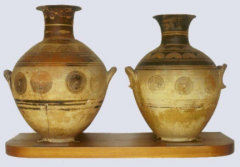
|
Protogeometric Amphoras 1050-900BC -circles, semi circles, lines, triangles, zigzags -thrown on potters wheel |
|
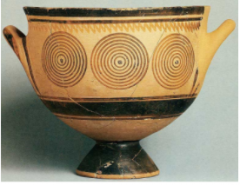
|
Protogeometric Skyphos -drinking cup with horizontal handle -zig zags, concentric circles, lines, triangles -thrown on potters wheel |
|
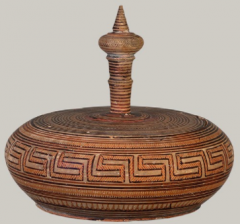
|
Early Geometric Pyxis 900-850 BC -meander pattern -cosmetic box -used to apply white lead --> look more pale -often circular -removable lid with handle |
|
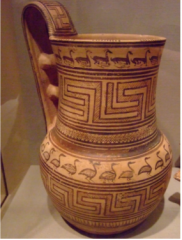
|
Middle Geometric Oenochoe 850-770 BC -wine pitcher -meander pattern -reintroduction of repetitive animals -pitcher for any liquid also |
|
|
6800-3200 BC |
Neolithic -Franchthi Cave -Sesklo -Dimini |
|
|
323-31 BC |
Hellenistic |
|
|
3000-1100 BC |
Bronze Age |
|
|
EMI, ECI, EHI |
3000 - 2500 BCE Crete -Myrtos -Vasilike cyclades greece |
|
|
EMII, ECII, EHII |
2500 - 2200 crete cyclades greece |
|
|
EMIII, ECIII, EHIII |
2200 - 2000 |
|
|
3000-2000 |
Early Bronze Age |
|
|
MMII, MCI/II |
2000 - 1700 BC crete -Knossos -Phaistos -Malia cyclades |
|
|
MH |
2000 - 1550 BC greece |
|
|
MMIII, MCIII |
1700 - 1550 BC crete -Knossos -Phaistos -Malia cyclades |
|
|
LMIA |
1550-1500 BC crete -knossos |
|
|
LMIB |
1500 - 1450 BC crete -knossos |
|
|
LHI/II/IIIA/IIIB/IIIC |
1550 - 1100 BC greece -Mycenae -Tiryns -Pylos |
|
|
Dark Age |
1100 - 900 crete -Karphl cyclades greece -Lefkandi -athens turkey -old smyrna |
|
|
Troy II |
EBA 2550 - 2300 BC |
|
|
Troy VI |
LBA 1550 - 1300/1250 BC |

